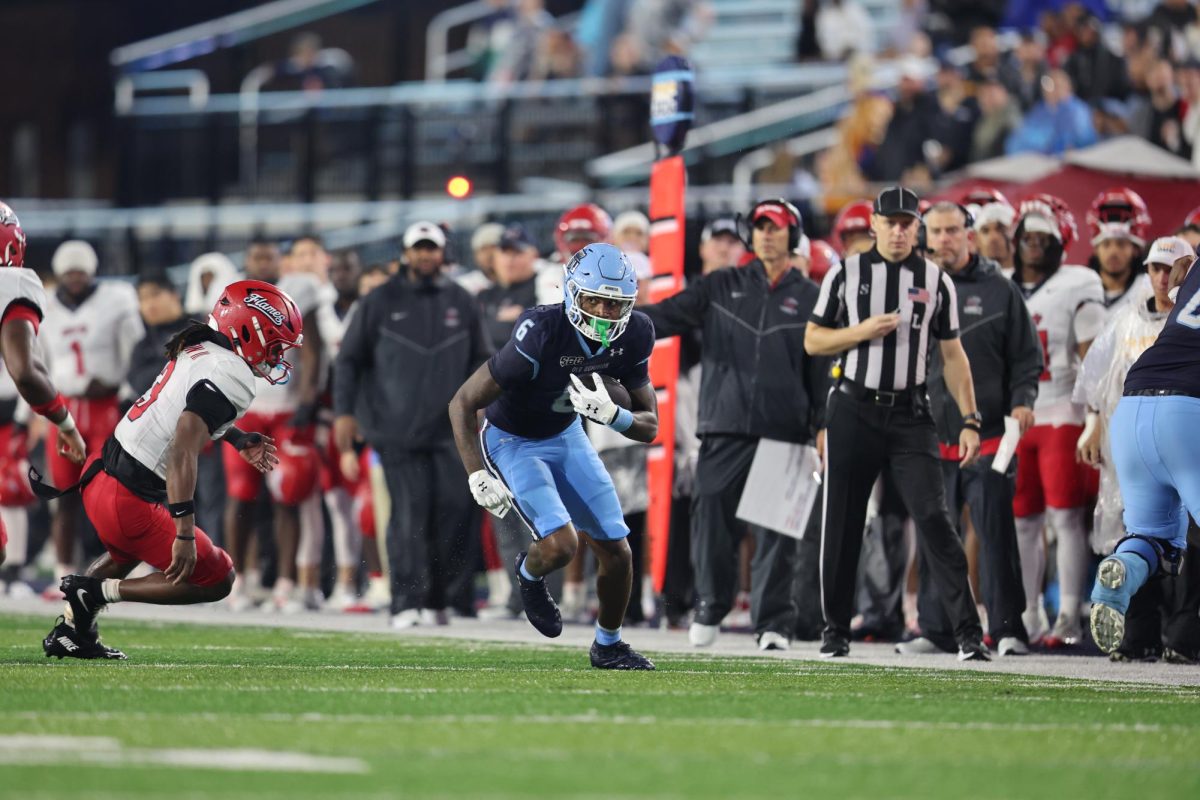Anti-Social Media
December 14, 2021
Originally published February 23, 2021.
As Generation Z continues to scroll through infinity and laugh at countless memes, apps like Facebook, Twitter, Instagram and now TikTok are banking off our inability to be social in the real world. Over the past few months I’ve noticed that I am constantly on social media and when looking at my daily and weekly averages, I am shocked at the amount of time I’ve given to social media. With easy access to mobile shopping, mobile banking and even mobile dating, when is it really necessary to go outside? The uprising in the global pandemic did not help this situation, with the virus being highly contagious and airborne, staying inside and operating completing online has become the norm for a lot of people.
On average I spend three hours and fifty-four minutes on Instagram a day. Fridays are the days I am the most active on social media and Tuesdays are my least active days. I realized that I instinctively open the app almost every time I open my phone without any thought. It’s like I have been subconsciously programmed to go on social media every time I use my phone even if the reason I go on my phone is for another purpose.
On Instagram users are able to set up creator and business profiles to view insights on their account. With insights users can track their impressions, account activity, profile visits, and website taps. Users can also view what their top stories are within the last seven to 14 days and learn the same information with their top posts within the last two years.
For the longest time I avoided making my Instagram a business/creator account because I did not want to get wrapped up in numbers and tracking the data on my account, but I became curious. I was curious about how much traction I was getting and why that was. At times it seems like it’s a game and I don’t think it should be. It’s easy to get wrapped up in views and numbers. When doing this you don’t end up comparing yourself to others instead you are in competition with yourself and how you can beat your last number, which in itself can be kind of toxic.
With this information I was able to keep tabs on my followers’ activity of my account. I am able to see the amount of times my post is saved or sent to someone else along with how many likes and the amount of people reached. Over that past few weeks I saw my engagement go up on days I was very active on the app. When starting this experiment, I originally thought that the less I posted the more views I would get but it was the complete opposite. The reason I thought this was based on a theory I formed for myself which is that with less engagement online, other users will be more inclined to view and interact with your account because of how “rare” it may be to post on the account. I’ve spoken to peers on this topic on how they go about posting and we all came to the same conclusion. The less we post the more engagement we’ll get… so we thought.
“The posts on my story are mainly posted based on my mood but if I am posting on my page I make sure that I absolutely like the picture and I post around 6-8pm from Friday-Sunday because I know people don’t have much to do but be on their phones during that time,” said Ciera Seymour. On Instagram Ciera has over 1,100 followers and says that social media has influence on the way she thinks because she is able to learn and observe a spectrum of perspectives.
I wanted to know why this was though. Why is it we care more about who views our stories and why do we put so much pressure on it? For months now, I along with other avid users of Instagram have been trying to crack the code on how their algorithm works. An algorithm is a mini profile on social media sites, as well as search engines, that tailor what users see based on how they interact with the content on their device.
On Instagram the algorithms are based on how a user interacts with various posts meaning
that a user’s feed is completely unique and won’t look like anyone else’s. One thing a lot of users (myself included) always wondered was if we are able to tell who is keeping tabs on our accounts. How it works is that users that you may have had a lot of interaction with in the past/currently via commenting, liking, messaging or even going on their page are more likely to appear towards the front of the stories to watch. This is because Instagram tracks not only the engagement coming to your account but also how much you engage with others and also who you engage with as well.
After understanding this I noticed how Instagram would feed me consistent content on fashion and beauty along with certain memes pertaining to music artists and TV shows. Seeing all that content on my Instagram explore page was expected but what I found interesting as well was how that same content would be given on another social media site or ads from brands I would search on google would pop up in my social media feed. What I gathered was as users we are all easily influenced and made to believe we have control over the type of content we see when really, we are puppets in a larger game to these outlets that profit off of our engagement.
“I am not on social media because it does not promote the positive things in life and makes people see what they want to see. If I’m on social media I’m misguided and if I’m not [on social media], then I’m not informed…” said Ryan Roberson. Roberson doesn’t believe he needs to be active on social media because of how social media feeds us a false sense of reality at times.
Once you go down the rabbit hole of social media and try to find the line that separates their algorithm from one of another company’s, I find that the lines are more interconnected creating a web of profiles all to feed into the growing number of dollars a business can make. This is quite interesting given that the original point of social media was to connect people with friends and family, however, it seems we are all competing to see who has more friends and family. With consistent content and trends fueled by social media, a false sense of reality has stricken the generation and with such easy access to insight of other people’s lives (or at least the ones they frame online) there is so much pressure to keep up with the Jones’ (however, given their influence, Kardashian may be more suitable now for this generation).
Even though I say all of this, and focus primarily on the negatives of social media, I don’t think I will ever stop using it because the reality of it is that it is an information hub. Maybe it’s also because I’m too deep into it and can’t find my way out of the web but I also surprisingly don’t want to leave either. Within all of the mess that social media creates there is beauty in it too. We have the ability to be engaged with people from all over the world and have access to information as soon as something happens. Many of the recent social justice movements have taken a lot of traction because of using social media as a tool to shine light on issues and expose the injustices that occur more often than we may think. Social media is neither just a blessing or a burden; it’s both.







